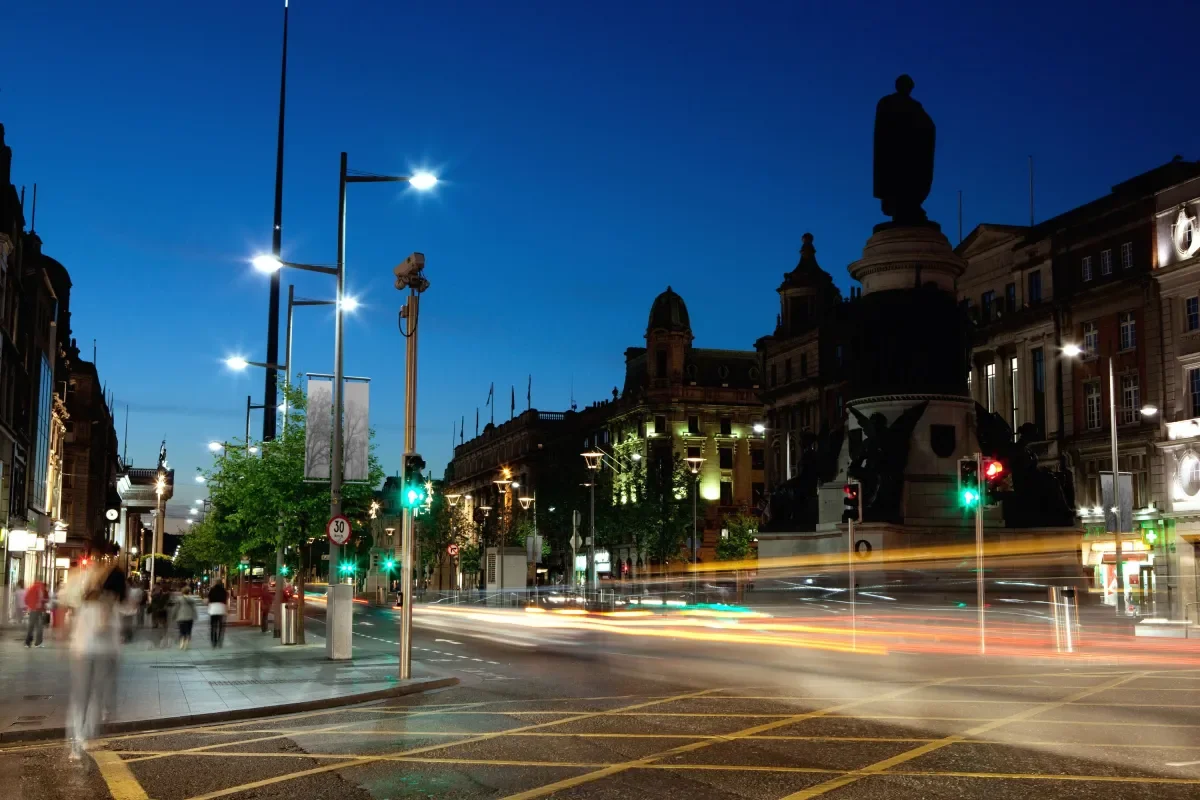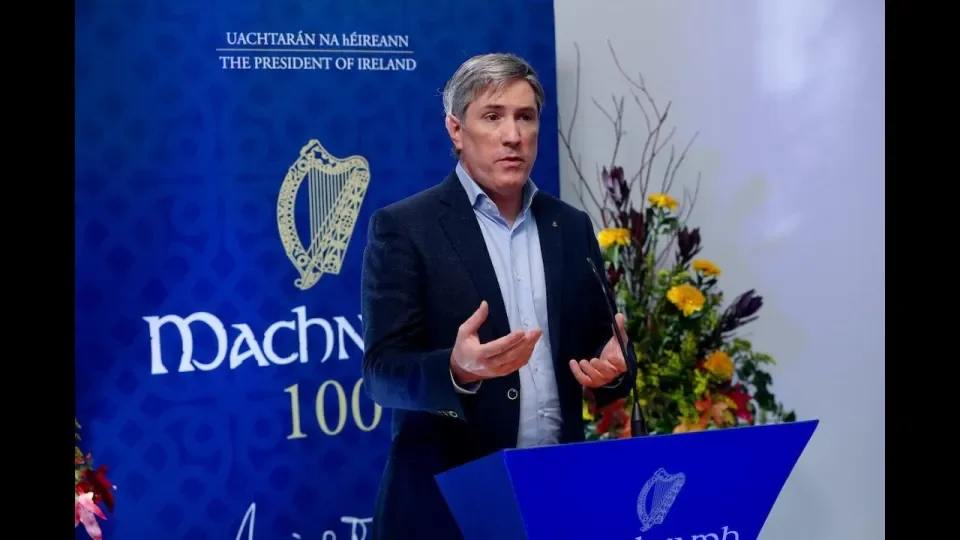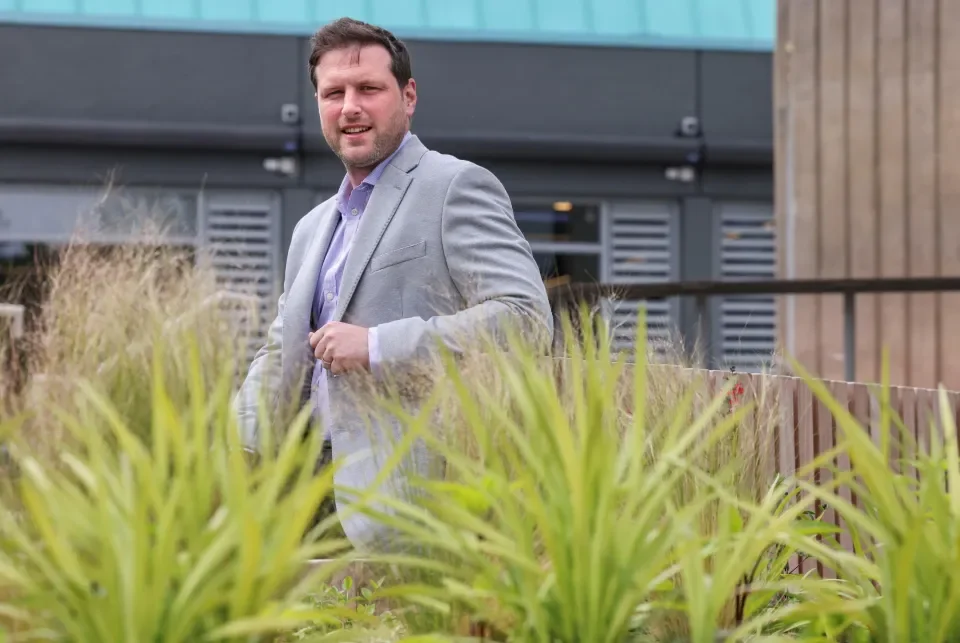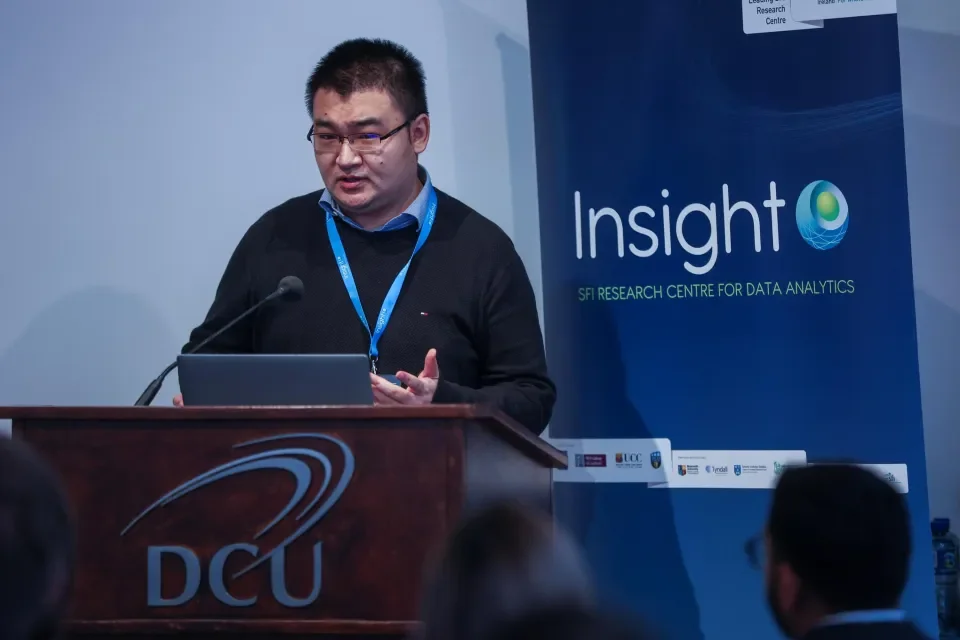
Research Newsletter - Issue 100: Spotlight

Researching the City: DCU projects focusing on Dublin
Dublin City University’s commitment to communities around its campuses is deep and well established. Furthermore, by drawing students and staff from across Dublin, the country and the world, DCU contributes to the fabric of the city as a whole. Another way the university affects the city is through research. Projects from across DCU are tracking the city’s past and present, and scanning the horizon to plot its potential future.
Restoring O'Connell Street

Dr Daithí Ó Corráin (School of History and Geography)
Dublin’s city centre is layered in history. The period following the Irish Civil War is now just over a hundred years ago, and a paper by Dr Daithí Ó Corráin (School of History and Geography) and Dr Joe Rodgers charts the restoration of O’Connell Street following intense combat in the area.
The street was subjected to large-scale destruction of properties and businesses for the second time since the 1916 Rising. Utilizing newly available compensation claims as well as state and local government records, Dr Ó Corráin and Dr Rodgers examine four aspects of the post-civil war restoration of O’Connell Street for the first time: the scale of the destruction; the compensation scheme devised by the Irish government which accorded O’Connell Street a unique status in the Damage to Property Compensation Act of 1923; the context of the town-planning regulations introduced, as well as the concerns of property owners, the local authority and central government; and the process of reconstruction – how compensation was paid, what properties were rebuilt, in what manner and when.
Dr Rodgers has also recently published an RTE Brainstorm article on the future of 42 O’Connell Street, the oldest surviving structure on the street. It is the last remaining house from the original Georgian development of the street. An Bord Pleanála’s granting of permission for a development between Moore Street and O'Connell Street means it and the surrounding buildings are due to be extensively renovated. Dr Rogers argues that the building should be turned into a time capsule museum, which could explore and detail the former residential and commercial glory of this important street, as 14 Henrietta Street has been.
Understanding Urban Pollution

Dr David O’Connor (School of Chemical Sciences)
Coming back to the present day, Dr David O’Connor (School of Chemical Sciences) and colleagues have used Google street data to chart pollution levels on streets across Dublin with real precision. The project used a google street view car fitted with an air quality sensor to collect samples which were then analysed for the presence of dangerous toxins and particulate.
The study, carried out by UCD and DCU academics, has found high levels of nitrogen dioxide and fine particulate matter across Dublin’s inner city, with particularly high concentrations on Cork Street, along the Quays, on O’Connell Street and in the area around Temple Bar. The paper identifies the top ten hotspots for air pollution across the city.
Overall, the data showed that during the sampling period, 49.4% of days exceeded World Health Organisation (WHO) guidelines for NO₂ levels, with peaks during rush hours, especially in winter. This project sought to provide data which will allow planners and politicians to shield communities from the worst effects and health issues caused by exposure to urban pollution. Adoption of this monitoring and mapping method would allow for a comprehensive understanding of the air pollution within Dublin city, thereby enabling real-time information about the exposure level and hotspots for further air quality management and public awareness.
Improving Dublin's E-Bike Experience

Dr Mingming Liu (School of Electronic Engineering)
Over the past year, Dr Mingming Liu (School of Electronic Engineering) has published multiple papers linked to a project improving user experience of electronic bikes in Dublin. Dr Liu and his team began with the creation of an open dataset, collected in Dublin, designed specifically to model energy consumption of shared e-bikes.
Previous studies have used more generalised data with less efficacy. Additionally, Dr Liu and his team have devised a smart parking recommendation system to help users park safely and ensure ready access to bikes across the city.
Dr Liu’s research also found that up to 12.9% of shared e-bike users did not park their shared e-bikes properly at designated stands due to inadequate planning and distribution. This inevitably reduced the overall operational efficacy of the service. In response Dr Liu’s team has developed Upark, a smart parking system which aims to enhance the user experience by providing accurate and personalized parking suggestions based on historical journey data and real-time trip trajectories. Specifically, U-Park combines historical journey data and real-time trip trajectories to predict both the user’s destination and the availability of nearby parking spots accurately and proactively. Based on the prediction results, personalized parking suggestions are provided to enable users to efficiently locate parking spaces.
These are just three of the many projects making an impact beyond Glasnevin, St Patrick's and All Hallows. Research across each of DCU’s five faculties informs our daily lives, either through better health information, easier commuting or a more informed understanding of our surroundings and their history. Research is a key part of the reciprocal relationship the university has with the city that gives it its name.
